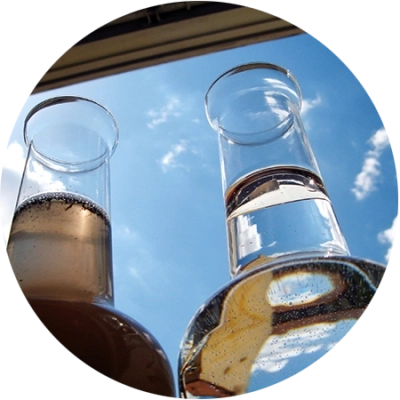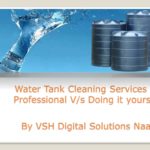Essential Guide to Water Tank Cleaning: Maintaining Purity in New Zealand’s H2O
Water is the essence of life, and ensuring its purity is of utmost importance. In New Zealand, where H2O plays a critical role in daily activities, the maintenance of water tanks is a topic that cannot be ignored. At present, an increasing number of households and businesses are recognizing the significance of water tank cleaning in maintaining the quality of their water supply.
One of the key impacts of neglecting water tank cleaning is the accumulation of sediment and debris. Over time, these impurities can harbor bacteria, algae, and other harmful microorganisms, posing a threat to the health of individuals consuming the water. Moreover, a neglected water tank may give rise to an unpleasant taste or odor in the water, rendering it unsuitable for everyday use.
In order to delve deeper into the essential guide to water tank cleaning, the subsequent section of this article will shed light on the various methods and techniques available to maintain the purity of water in New Zealand. From basic cleaning practices to advanced filtration systems, we will explore a range of options that can be adopted by households and businesses alike.
Furthermore, we will delve into the importance of regular maintenance and inspection of water tanks, highlighting the significance of proactive measures in preventing contamination. Additionally, we will discuss the potential health risks associated with unclean water tanks, emphasizing the need for comprehensive cleaning procedures.
By equipping ourselves with knowledge about water tank cleaning, we are empowered to take appropriate action and ensure the purity of the water we consume. In the following sections, we will discover practical steps and expert advice to maintain water tanks in optimum condition, guaranteeing a safe and healthy water supply for ourselves and our communities. Let us dive into the world of water tank cleaning and uncover the secrets to maintaining purity in New Zealand’s H2O.
Why is water tank cleaning important?
Water tank cleaning is crucial for maintaining the purity of the H2O in New Zealand. Over time, dirt, debris, and organic matter can accumulate in water tanks, leading to the growth of bacteria, viruses, and algae. These contaminants can pose serious health risks if consumed or come into contact with the skin. Regular water tank cleaning ensures that the water remains clean, safe, and free from any harmful substances.
How often should water tanks be cleaned?
The frequency of water tank cleaning depends on various factors such as the size of the tank, the water source, and the surrounding environment. However, as a general guideline, it is recommended to clean your water tank at least once every 6 to 12 months. This schedule ensures that any potential buildup of pollutants is addressed before it becomes a significant issue.
Steps to clean your water tank
– Drain the tank: Start by turning off the water supply and emptying the tank completely.
– Remove sediment and debris: Use a brush or hose to scrub the interior walls of the tank, removing any sediment or debris that may have accumulated over time.
– Disinfect the tank: After cleaning, disinfect the tank with a suitable water tank cleaning solution or chlorine bleach to kill any bacteria or viruses present. Follow the instructions provided for the correct concentration and contact time.
– Rinse thoroughly: Once the disinfection process is complete, thoroughly rinse the tank with clean water to remove any residue from the cleaning solution or bleach.
– Test the water quality: After refilling the tank, test the water quality to ensure it meets the necessary standards for drinking or household use.
Preventive measures for maintaining water tank purity
– Keep the tank covered: Prevent debris, insects, and animals from entering the tank by ensuring it has a proper and secure cover.
– Regularly inspect the tank: Check for any signs of leaks, cracks, or damage that may compromise the integrity of the tank. Promptly repair or replace any faulty parts.
– Monitor water source quality: If your water source comes from a well or rainwater collection system, regularly test the source water for contaminants and address any issues accordingly.
– Install a filtration system: Consider installing a filtration system to further improve the quality of the water coming from the tank. This can help remove any residual impurities and ensure safer consumption.
– Stay up to date with regulations: Familiarize yourself with local regulations and guidelines regarding water tank maintenance and cleaning to ensure compliance and best practices.
Professional water tank cleaning services
If you are unsure about cleaning your water tank yourself or prefer to leave it to the experts, consider hiring a professional water tank cleaning service. These professionals have the necessary equipment, knowledge, and experience to thoroughly clean and disinfect your water tank, ensuring optimal water purity and safety for you and your family.
Pros of Essential Guide to Water Tank Cleaning: Maintaining Purity in New Zealand’s H2O
1. Enhanced Water Quality:
The essential guide to water tank cleaning provides valuable insights and techniques to maintain the purity of H2O in New Zealand. By following this guide, individuals and households can ensure enhanced water quality, free from contaminants and impurities that may pose health risks.
2. Healthier Living:
Regularly cleaning and maintaining water tanks using the recommended practices outlined in the guide promotes healthier living conditions. Pure and clean water contributes to overall well-being, reducing the chances of waterborne diseases and illnesses.
3. Longevity of Water Tanks:
Regular cleaning and maintenance of water tanks ensure their longevity. The essential guide equips individuals with necessary knowledge on proper cleaning methods and preventive measures to avoid damage or deterioration of water tanks over time, ultimately saving costs on repairs or replacements.
4. Environmental Benefits:
By adhering to the essential guide for water tank cleaning, New Zealanders contribute to environmental preservation. Proper sanitation reduces the risk of contaminated water reaching ecosystems and bodies of water, protecting wildlife and the environment as a whole.
5. Cost savings:
Following the essential guide helps to prevent costly issues such as the buildup of algae, bacteria, or sediment in water tanks. By maintaining purity, individuals can avoid potential damages to plumbing systems, water filtration devices, and appliances, resulting in long-term cost savings.
6. Compliance with Regulations:
The essential guide ensures individuals and businesses in New Zealand comply with the regulations and standards set by local authorities regarding water tank cleanliness. By following the recommended practices, one can avoid penalties or legal consequences related to water quality regulations.
7. Peace of Mind:
By implementing the essential guide to water tank cleaning, individuals gain peace of mind knowing that they are taking proactive steps to maintain the purity of their water supply. This knowledge enables them to provide safe and clean water for their families and communities, fostering a sense of responsibility and well-being.
8. Educational Resource:
The essential guide serves as an educational resource that empowers individuals with knowledge regarding water tank cleaning and maintenance. It equips readers with valuable skills that can be shared within their communities, facilitating a collective effort to ensure pure and untainted water sources for everyone.
Cons of Essential Guide to Water Tank Cleaning: Maintaining Purity in New Zealand’s H2O
1. Lack of Specificity:
The Essential Guide to Water Tank Cleaning fails to provide specific guidelines tailored to the unique conditions and water quality concerns in New Zealand. With a generic approach, it may not address the specific issues faced by individuals and households in maintaining purity in their water tanks.
2. Limited Scope:
This guide focuses solely on water tank cleaning, overlooking other crucial aspects of water quality maintenance. Readers may find themselves in need of additional resources to address related problems such as water filtration, disinfection, or the prevention of algae and bacterial growth.
3. Insufficient Maintenance Practices:
While the guide offers cleaning instructions, it lacks comprehensive advice on ongoing maintenance practices. Readers may struggle to identify signs of contamination or understand the frequency and methods necessary to ensure consistent purity in their water tanks.
4. Lack of Scientific Support:
There is no mention of scientific studies, research, or expert opinions backing the recommendations provided in the Essential Guide. Without this vetted evidence, readers may question the effectiveness and reliability of the mentioned cleaning techniques and advice.
5. Inadequate Analysis of Potential Risks:
The guide does not thoroughly assess the potential risks associated with water tank cleaning, such as exposure to harmful chemicals or the release of harmful pathogens. Without a balanced evaluation, readers may inadvertently put themselves and their families at risk during the cleaning process.
6. Lack of Alternative Solutions:
Not all readers may have access to the recommended cleaning products or equipment mentioned in the guide. Furthermore, it fails to provide alternative options for those who may prefer or require more natural or eco-friendly cleaning methods.






